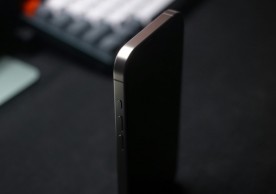NASA’s New Horizons App ‘Eyes on the Solar System’ Brings Earth Closer to Pluto
NASA’s New Horizons App ‘Eyes on the Solar System’ Brings Earth Closer to Pluto
Staff ReporterGrand piano-like spacecraft New Horizons launched by NASA on Jan. 19, 2006 is about to make its closest flyby to Pluto in no less than 12 hours at 7:49 am EST on July 14 and "Eyes on the Solar System" (EotSS) app would take you right there through real-time simulation.
After travelling 3 billion miles or 4.8 billion kilometers for almost nine and a half years, the New Horizons will finally provide Earth a glimpse of Pluto's close-up view as it flies its final half-million mile journey. In order for observers not to miss this historic moment, NASA provided the EotSS app that can virtually take them to the outer space and have the chance to personally see the planetary debut.
In addition, virtual followers can also monitor the speed, countdown time and distance of the New Horizons as it approaches Pluto using the app. The public may familiarize with RALPH, ALICE, REX, and LORRI, which are some of the instruments inside the spacecraft.
While waiting for the final close-up of Pluto, you may view some of the fascinating spots in the universe through EotSS app, including the magnificent photos of Earth as captured by NASA satellites. If you want to explore more, then the app can help you search for a planet outside our solar system that can sustain life.
Moreover, the public can access and download the EotSS app for free from NASA's website. The software was developed by Jet Propulsion Laboratory (JPL) to present a real-time view of our solar system including planets and spacecrafts.
In all these latest developments, perhaps the most excited to witness the Pluto flyby is none other than the mission's principal investigator, Alan Stern, who worked for this for 15 years. He told the Daily Mail, "'The adrenaline is intense at the moment. [I'm] literally sleeping four hours a night and feeling great."
Once the mission is perfectly executed, NASA's New Horizons will head towards one or more Kuiper Belt Objects (KBOs) which is considered part of the region of the Solar System as discovered by Dutch-American astronomer Gerard Kuiper in 1992.
© Copyright 2020 Mobile & Apps, All rights reserved. Do not reproduce without permission.most read
related stories
more stories from Mobile
-
Google-Backed Glance Launches Pilot of Android Lockscreen Platform in US
Check out the latest from Glance! They're piloting their Android Lockscreen Platform in the US. Don't miss it!
ernest hamilton -
X Plans Smart TV App, Promising Immersive Entertainment Experience
Exciting news! X plans to launch a Smart TV app for an immersive entertainment experience. Stay tuned!
ernest hamilton -
T-Mobile Introduces New 5G Internet Plans for Enhanced Home and Travel Connectivity
T-Mobile unveils new 5G internet plans, promising enhanced home and travel connectivity for customers seeking high-speed internet on the go.
ernest hamilton -
Huawei Aims for Global Expansion of HarmonyOS, Rivaling Android and iOS
Huawei sets sights on global expansion with HarmonyOS, aiming to rival Android and iOS in the competitive mobile operating system market.
ernest hamilton -
Apple Releases Third Betas for iOS 17.5 and iPadOS 17.5, Introducing App Ecosystem Changes and New Features
Stay ahead with the latest updates! Apple rolls out third betas for iOS 17.5 and iPadOS 17.5, bringing exciting app ecosystem changes and new features.
ernest hamilton -
The MIAD 01: Audiophile Brand Moondrop Teases Its First Smartphone
Moondrop, known for audiophile gear, teases its inaugural smartphone, the MIAD 01, promising a unique blend of audio excellence and mobile technology.
ernest hamilton -
Android 15 Could Simplify Notification Channels, Hide Unused Ones
Android 15 aims to streamline notification channels by hiding unused ones, enhancing user experience and decluttering notification settings.
ernest hamilton -
DolphiniOS Reveals Why GameCube and Wii Emulator Won't Be Available in App Store
DolphiniOS developers shed light on why the GameCube and Wii emulator won't be available in the App Store.
ernest hamilton













